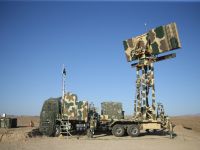Dell has announced its energy-efficiency product strategy, underscoring the importance of reduced power consumption as well as enhanced performance in its product design.
The company also launched an energy resource guide at www.dell.com/energy to help customers project their power needs using Dell products.
“Dell is committed to providing our customers products with the most performance per watt,” said Dell CEO Kevin Rollins. “Our energy-efficient products help customers lower cost of ownership and help meet the broader goal of protecting the environment. It’s critical that our entire industry address this important issue.”
The focus on product energy efficiency is designed to help customers decrease electricity usage and system operating cost. Customers visiting Dell’s energy resource site can view the energy-efficient features of several Dell product families and access energy calculators to help estimate power needs. A calculator is available for the energy-efficient Dell OptiPlex™ 745 desktop system launched today, and calculators for other product families will be available later this year. A separate data centre capacity planner allows customers to “drag and drop” their desired configuration of products into a virtual server rack and estimate the power needs to run their IT operations.
Product Energy Efficiency Features
Dell’s new OptiPlex™ 745 features Intel® Core™ 2 Duo processors, which help deliver up to 30 percent better performance, and power savings of about 40 percent versus previous generation Intel® processors . The total number of customers expected to deploy the new OptiPlex system with power-efficient Dell Energy Smart settings, an Intel® Core™ 2 Duo processor and a Dell flat-panel monitor, have the potential to save nearly $1 billion every year in energy costs worldwide compared to previous-generation systems2, or avoid the equivalent emissions of removing nearly one million cars from the road.
Dell’s recently launched ninth-generation PowerEdge™ servers can lower power consumption by up to 25 percent, which when combined with significant increases in performance, provides gains of up to 169 percent3 in performance per watt. The PowerEdge Servers incorporate several features to help reduce power consumption. Each server is built with an Intel® dual-core Xeon™ 5100 series processors, which is designed to significantly increase performance while reducing power requirements, as well as high efficiency power supplies and low form factor SAS (Serial Attached SCSI) hard drives that can reduce thermal output.
All Dell Inspiron™ and Latitude™ notebooks and Dell Precision™ mobile workstations now ship with sleep-state enabled, following a precedent set by the company’s OptiPlex and Dell Precision desktop workstation products. This feature automatically puts the computer into a low-power “sleep” state after 15 minutes of inactivity, but allows the computer to quickly “wake-up” when needed. Sleep state enablement is a key factor of Energy Star® compliance which can help reduce electricity needed to operate these systems by an estimated 70 percent.
Dell™ also announced that all external power supplies for its Inspiron™ and Latitude™ notebook products are designed to meet new Energy Star requirements for computer external power supplies4.
About Dell
Dell Inc. (NASDAQ: DELL) listens to customers and delivers innovative technology and services they trust and value. Uniquely enabled by its direct business model, Dell sells more systems globally than any computer company, placing it No. 25 on the Fortune 500. Company revenue for the past four quarters was $57.4 billion. For more information, visit http://www.dell.com. To get Dell news direct, visit http://www.dell.com/RSS.
# # #
© 2006 Dell Corporation Limited Dell, PowerEdge, Inspiron, Latitude, Dell Precision and OptiPlex are trademarks of Dell Inc.
Dell disclaims any proprietary interest in the marks and names of others.
1. Based on Sysmark 2004 SE Office Productivity benchmark tests performed by Dell Labs in Aug. 2006 on OptiPlex 745 with Intel® Core™ 2 Duo E6300 CPU, 1GB DDR2 (dual channel) memory, 80GB 7200 SATA HDD, Intel GMA3000 integrated graphics and XP Pro SP2 OS, compared with the OptiPlex GX620 with Intel® Pentium™ D 830 CPU, 1GB DDR2 (dual channel) memory, 80GB 7200 SATA HDD, Intel® GMA950 integrated graphics, and XP Pro SP2 OS. Actual performance and power consumption will vary based on configuration, usage and manufacturing variability.
2. Potential annual energy savings of $910 million calculated based on worldwide OptiPlex shipments in 2005 and 2006 U.S. average unit cost of energy of $0.10/KWh. Emissions equivalence to automobiles calculated using the U.S. Climate Technology Cooperation Gateway calculator at http://www.usctcgateway.net/tool/
3. Based on testing performed by Dell Labs in May 2006 using the SPECjbb2005 benchmark on a PE2950 with two dual core Intel® Xeon® 5160 (3.0Ghz Woodcrest) processors, 4GB 667Mhz and 533Mhz FBD memory, 2x SAS 73GB/15k rpm HDDs, Windows Server 2003™ Enterprise x64 Edition OS as compared to a PE2850 with two dual core Intel® Xeon® 2.8Ghz Paxville processors, 4GB 400Mhz DDR2 memory, 2x SCSI 36GB/15K rpm HD's, and Windows Server 2003™ Enterprise x64 Edition OS. Actual performance and power consumption will vary based on configuration, usage and manufacturing variability.
4. Energy Star® Programme requirements for single voltage External AC-DC power supplies.







